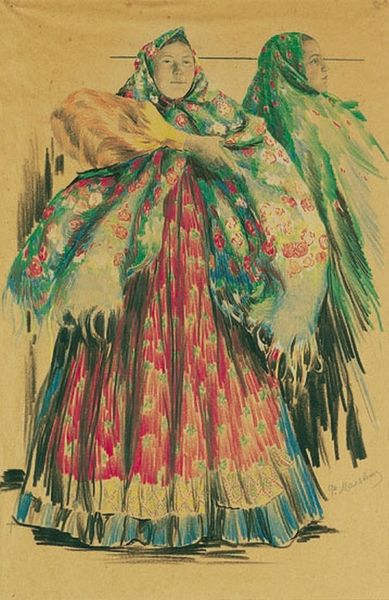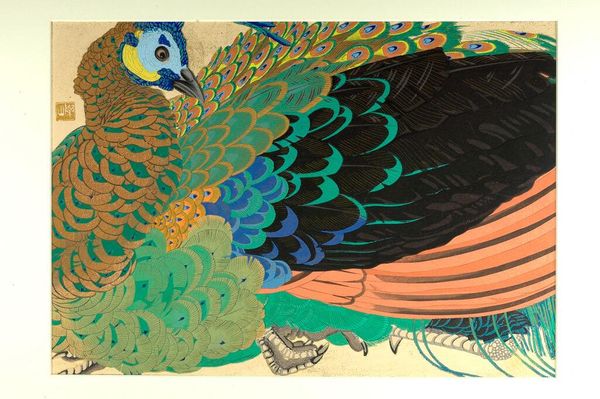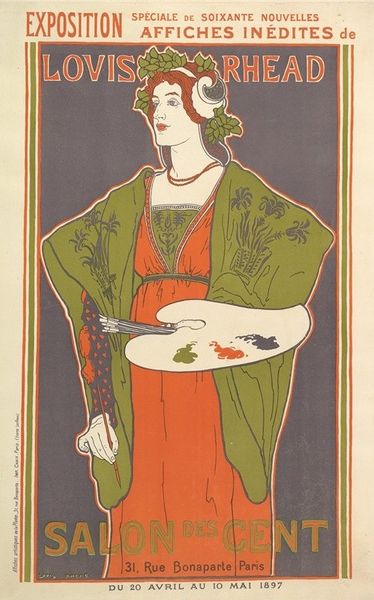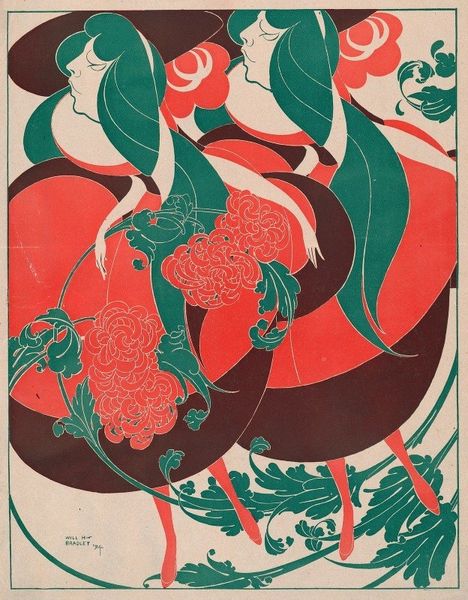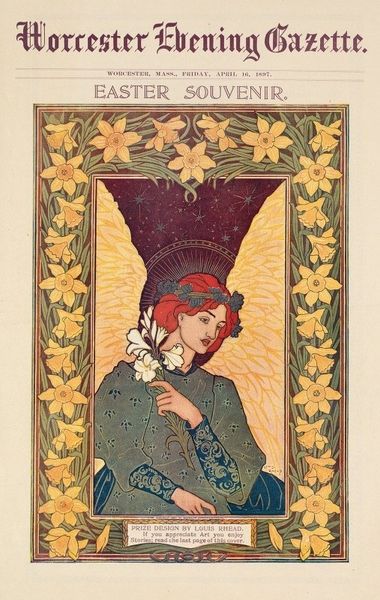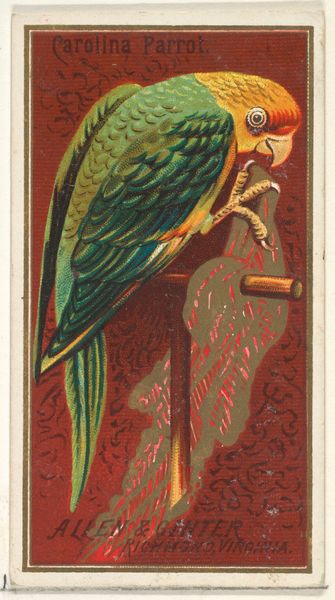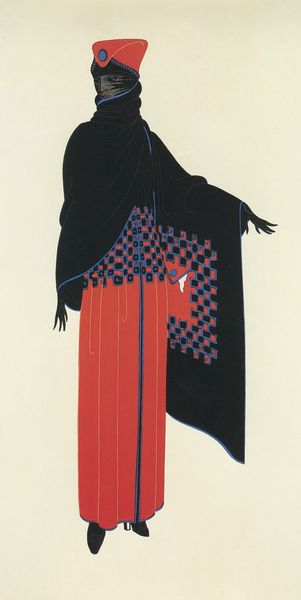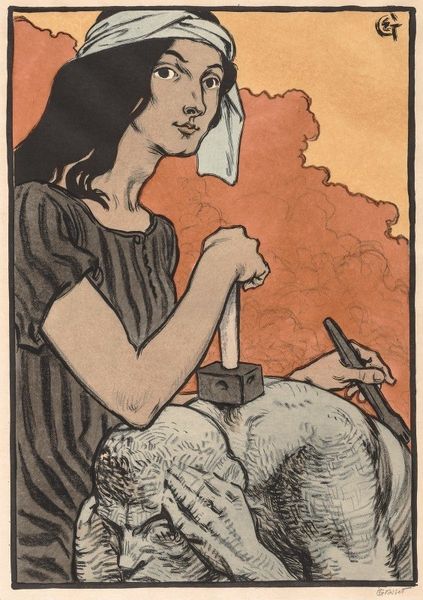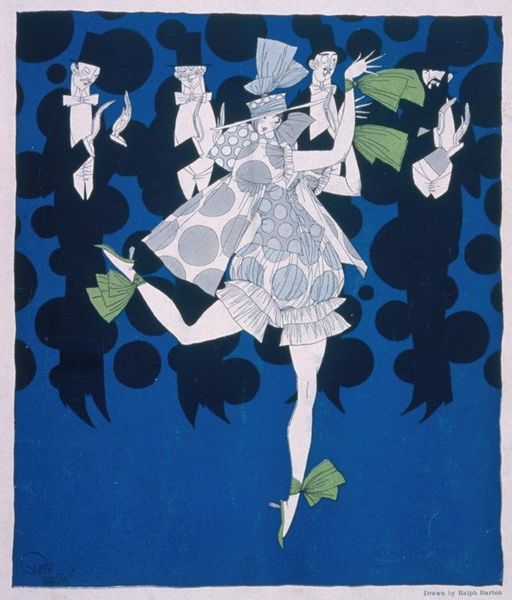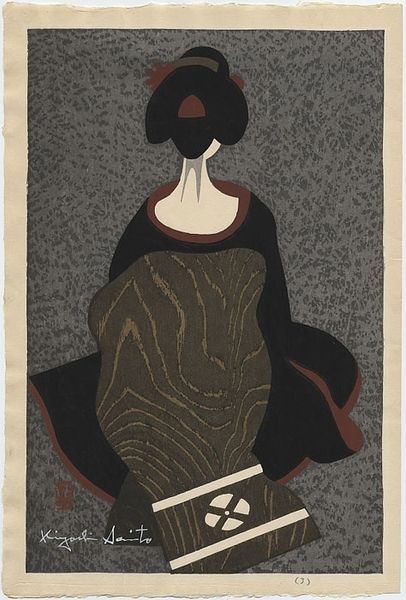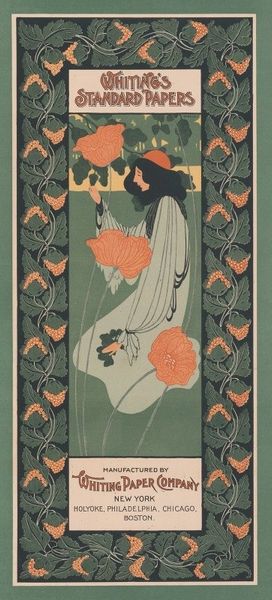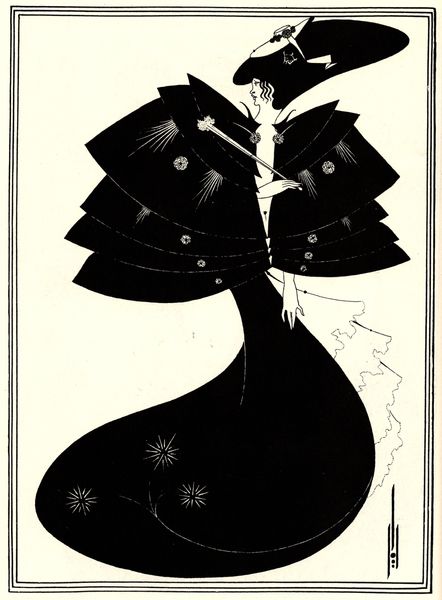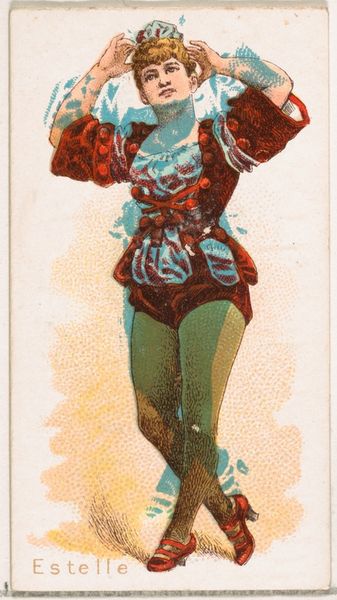
Toy rooster & trees on circular bases executed in various printing techniques. 1903
0:00
0:00
print, poster
#
art-nouveau
# print
#
poster
Copyright: Public Domain: Artvee
Curator: So bold! I immediately notice the use of contrasting colors; a very rich olive green is balanced against an orange-tan. The rooster form seems at once present but stylized. What’s your first take? Editor: This print, dating back to 1903, comes from the hand of the American artist Will Bradley. He entitled it “Toy Rooster & Trees on Circular Bases executed in various printing techniques.” Bradley, along with Mucha, Toulouse-Lautrec and others significantly advanced poster design as fine art at the turn of the century. Looking at this piece, we get a clear picture of what he was trying to do for printing arts at that time. Curator: Printing Art? That’s actually visible printed in the lower part of the artwork itself. Bradley wasn’t just an artist, he also worked as a designer and printer. So, he clearly intended this image as a sort of advertisement piece that could showcase a range of capabilities. Editor: The Art Nouveau influences here are plain to see, especially in the curving lines and organic forms of the rooster, the trees. And those subtle circular bases under everything provide a great sense of grounding in an otherwise flattened space. It almost reminds me of a stage set. Curator: I find myself drawn to how Bradley positions this image of, essentially, rural life against the backdrop of rapidly industrializing America. He wasn’t alone among artists in grappling with this dichotomy between rural past and urban future. What Bradley uniquely contributes to this is making this piece of marketing simultaneously. It highlights the possibilities that mass printing now enables, even while evoking the craftsman tradition. Editor: Do you think his stylistic choices – the simplification of form and limited color palette – also served to make the piece easily reproducible via then-current printing technologies? He wasn't just indulging in Art Nouveau flourishes. Curator: Undoubtedly. Each element serves both an aesthetic and practical function, very in keeping with the Arts and Crafts movement, though rendered through the lens of modern advertising and image reproduction. It presents tradition anew through its presentation. Editor: So, to summarize, what strikes me is the compositional balance – between bold simplicity and elegant detail, flatness and subtle depth. It’s a testament to how graphic design principles could be elevated into something aesthetically compelling. Curator: And for me, it’s how Bradley understood the poster’s inherent place within, and response to, broader social and technological changes. It highlights the critical need to continue seeing our daily images with their historical forces always at play.
Comments
No comments
Be the first to comment and join the conversation on the ultimate creative platform.
